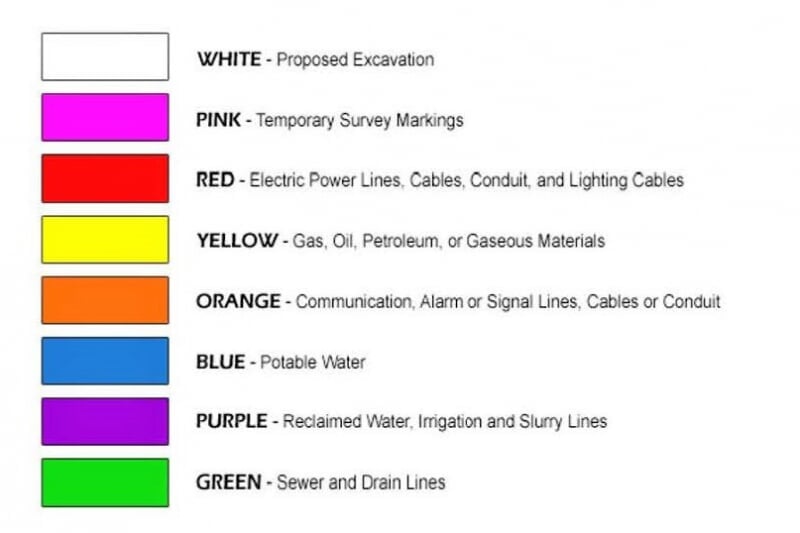The MISS DIG Underground Facility Damage Prevention and Safety Act” (PA174) requires that a person or public agency must provide a dig notice to MISS DIG 811 on intent to excavate, tunnel, discharge explosives, or demolish at least three business days, but not more than 14 calendar days, before commencing the activity. Upon notification, MISS DIG 811 will notify participating members to stake their underground utility lines and/or provide overhead electric line assistance to ensure adequate clearances are maintained. The staking is only an approximation and does not indicate the exact location (to the inch) or the depth of the utility. Participating utilities include underground telephone and fiber, gas, electric, water, sewer, and storm lines and drains.”
The University is responsible for the protection and maintenance of campus utilities consistent with those summarized above and as such is considered a “facility owner/operator”. Owner/operators are responsible for providing “positive response” for assigned dig tickets. Positive response is a term used to describe the two types of action taken by the University when responding to a dig notification. Within three business days staff from Facilities Management and Information Technology will perform the following:
- Locate and mark underground utilities with stakes, paint, or flags; and,
- Respond to the dig notification indicating which utilities have been marked if they are present or cleared as “no conflict” if they’re not present.
A variety of campus activities might require the need for utilities to be located; examples might include test pitting or boring for experimental purposes, tent installation and staking, or installation of sign or fence posts.
Faculty, staff, and students are expected to comply with campus health and safety guidance. If activities include earthwork, the location of utilities should be included when planning the work. Michigan law requires anyone who is responsible for the planning or performance of any type of earthwork on University property to submit a locate request through Miss Dig 811.
Prior to submitting your request, prepare to answer questions related to the proposed earthwork, including the following:
- Your name and phone number.
- The contractor or person doing the work.
- The name and phone number of the on-site contact
- The geographical location (county and city) of the work area.
- The address where the work will be done.
- Nearest cross streets to the work site.
- The type of work being done; for example, tent installation.
- Information about the project area that identifies the work limits for the utility locators.
If utilities are present in the proposed dig location they will be marked with colored paint, representing various utilities. The Uniform Color Code for Marking describes the paint/flagging colors that will be used to locate specific utilities.

Excavators should review the markings and confirm that all utilities are accounted for. Consider the potential for unmarked utilities for example, communication pedestals, meters, transformers, or fire hydrants in the vicinity with no flags or paint. This may be an indication that something wasn’t marked. Please contact Facilities Management if you have any questions related to unmarked utilities or if markings have been destroyed.
The University generally doesn’t provide information related to the utility depths. Variables such as human intervention, frost heave, and erosion can affect the depth of utilities, regardless of plans or as-built drawings.
When performing the excavation work, methods should utilize best practices. When digging within the Caution Zone, which is 4 feet on either side of the paint or flags, excavators must use “soft” excavation methods to expose the utility. Soft excavation is intended to prevent contact damage to underground utilities. Methods may include using a shovel to hand-dig, vacuum excavation methods, or the use of pneumatic hand tools. Excavation in the Safe Zone includes dig locations that are 4 feet or more from either side of the paint or flags. Safe Zone excavation does not require soft excavation to expose buried utilities.
If you have any questions about campus utilities or the need to have them located, please contact Facilities Management.